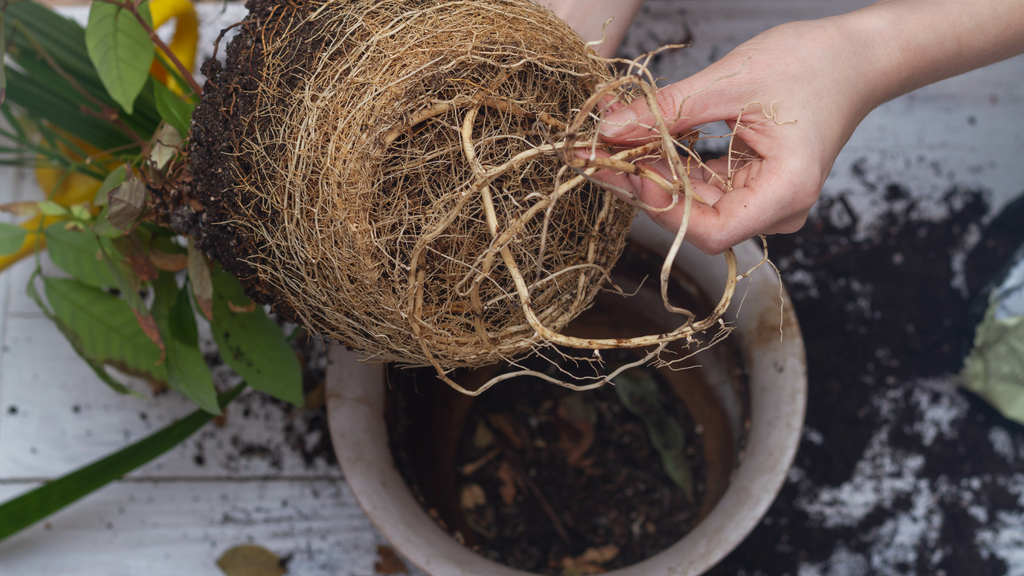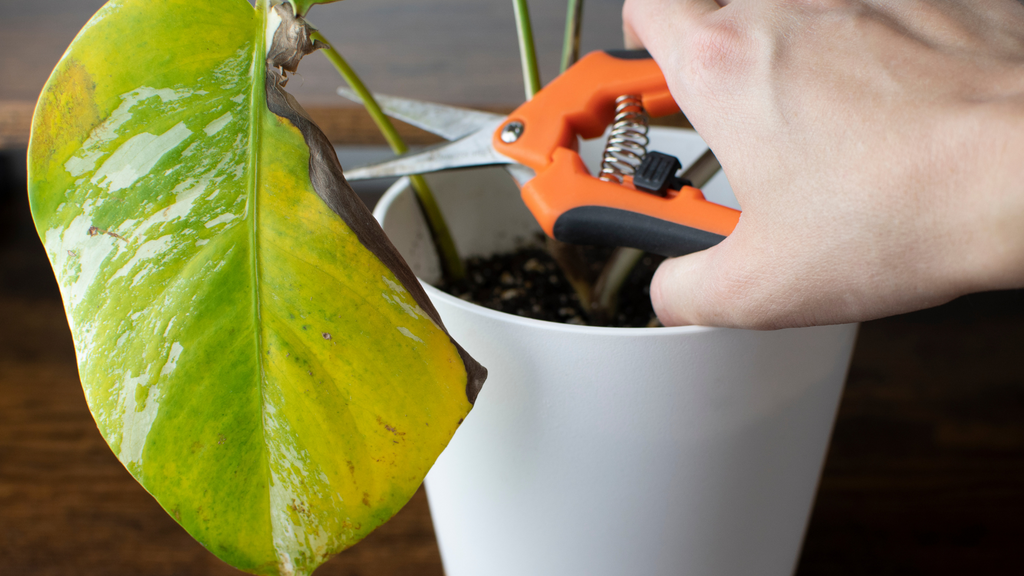Mastering the art of repotting is crucial for the health and vitality of your plant babies, and spring is the perfect time to do it! In this comprehensive guide, we'll walk you through the process step by step, ensuring your Bettendorf houseplants thrive all year round.
 Knowing When to Repot Houseplants
Knowing When to Repot Houseplants
Recognizing when your houseplants need repotting is the first step toward ensuring their continued growth and health, making it a crucial part of indoor plant care.
Here are some common signs to look out for:
- Browning or yellowing leaves: Discoloration in your plants' foliage can indicate nutrient deficiencies or root-bound plants.
- Wilting or drooping foliage: If your plants are wilting or looking a little droopy, it can be a sign of a lack of water or compacted soil, meaning a move may be needed.
- Roots protruding from drainage holes: When roots outgrow their pots, they may start poking out of the drainage holes, signaling the need for a larger container.
- Pot becoming too small for the plant: If your plant looks crowded or unstable in its current pot, it's time to consider repotting.
If you've noticed any of these signs, it's likely time to repot your houseplants to provide them with the space and nutrients they need to flourish.
 Choosing the Perfect Pot
Choosing the Perfect Pot
Selecting the right pot is essential for the well-being of your houseplants. Here's what to consider when doing your pot shopping:
- Pot size: Choose a pot that allows room for your plant's roots to grow without being too cramped. A general rule of thumb is to select a pot that's 1-2 inches larger in diameter than your plant's current container.
- Material: Terracotta pots are excellent for plants that prefer well-draining soil, as they allow air to flow through the roots. However, ceramic and plastic pots are also suitable options, depending on your plant's needs and your design and color preferences.
- Drainage: Opt for pots with adequate drainage holes to prevent waterlogged soil, which can lead to root rot. If you fall in love with a pot that doesn't have drainage, you can always use it as a decorative outer pot also called a cachepot, and repot your plant into a plastic nursery pot with drainage holes and placing it inside.
 Guidelines for Repotting Houseplants
Guidelines for Repotting Houseplants
When it comes to repotting houseplants, attention to detail is the key to ensuring success. Here are some specific guidelines to follow:
- Gently ease out roots: Carefully loosen your plant's roots from the old soil to encourage healthy growth in the new pot. Avoid excessive tugging or pulling, as this can damage delicate root structures.
- Remove dead leaves: Before repotting, prune away any dead or yellowing leaves. This will improve the appearance of your plant and promote new growth.
- Knock off old soil: Tap any old soil away from your plant's roots to remove any compacted or dry material, allowing them to spread out easier in the fresh potting mix.
 Establishing a Care Routine
Establishing a Care Routine
Maintaining a consistent care routine is key to the long-term health of your repotted houseplants as it sets them up for success. Here's how to do it:
- Watering: Adjust your watering frequency based on the season and your plants' moisture needs, taking care to monitor the soil regularly to ensure it remains evenly moist but not waterlogged. Remember that overwatering is one of the most common causes of houseplant problems, so always err on the side of underwatering if you're ever unsure. Wallace’s offers several different plant moisture meters that are easy to use to help determine the water needs of your plants.
- Feeding: Use a balanced fertilizer to provide essential nutrients to your houseplants during the growing season. Follow the instructions on the fertilizer packaging for best results, and consider using a diluted solution to avoid over-fertilizing, which can harm your plants.
Learning how to properly repot houseplants is essential for their health and vitality. By following these simple tips and tricks, you'll be well-equipped to recognize when your plants need repotting, choose the perfect pot for their needs, and establish a care routine that ensures their continued growth and prosperity.
Come see us today at Wallace's Garden Center for even more expert advice you'll need to keep your greens growing happily in Iowa!


